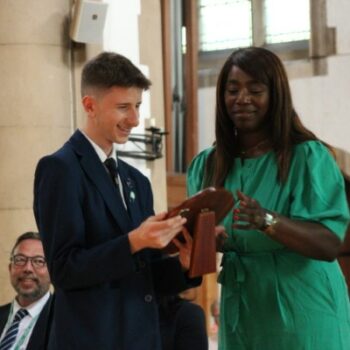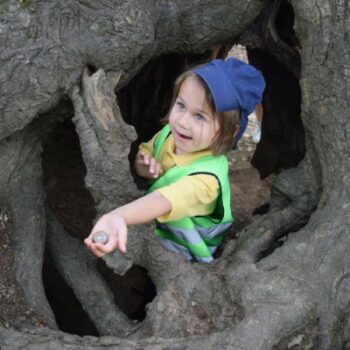Year 8 demonstrated excellent factual recall of the information they learned during their trip to the Queen Elizabeth Hunting Lodge. Raf remembered that it was built in 1543 during the reign of Henry VIII, who died four years later. Nicole recalled the ‘mystery’ fork in the Tudor food section, and she also recognised the Tudor rose depicted in the banners on the Royal floor. Mario spotted the Welsh dragon on another banner, and Lucy realised that England was allied with Wales but not Scotland at this stage. Pupils also saw the Phoenix on a banner, which was adopted by Queen Elizabeth I after she recovered from smallpox at the age of 27.
Like many other pupils, Lucy’s favourite part of the trip was donning Tudor clothes, including capes and hats, with Raf stepping out as King Henry VIII! Other highlights included handling the Tudor food like quail eggs, a boar’s head and a wide variety of fish and meat. They also saw a globe of the known world in 1540, and learned that black teeth became a sign of wealth due to the popularity of sugar that was being brought back to England by explorers.
As they ascended the wide staircase to the top floor, they learned about the legend that Queen Elizabeth I once climbed the same stairs mounted on a horse to celebrate the English defeat over the Spanish Armada. The guide, Kate, explained that the hunting horn would have sounded as people enjoyed the excellent views of Epping Forest. These would have been enhanced by the lack of glass windows and walls in the original building which were added later by Queen Elizabeth I along with a fireplace and chimneys. Kate then showed pupils antlers from both a red and a fallow deer, and Elliot was only a year wrong when asked to work out their age. Trinav was interested in the crossbow and bolt used for hunting, which had to be reloaded every 20 seconds and could be fatal.
As Year 8 strolled back to school in the warm October sunshine, Hamza reflected that it had been an interesting and educational trip which had highlighted the different ways animals were hunted in Tudor England as well as many other aspects of everyday life.












